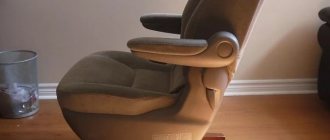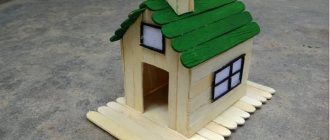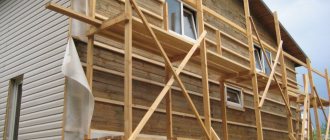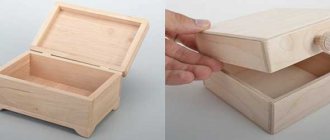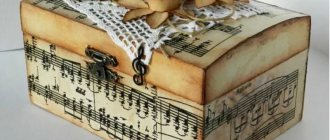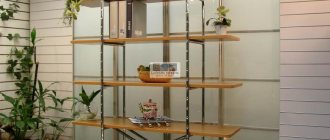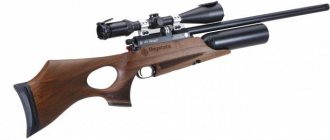Making a chair with your own hands from wood is easy and fun, and such furniture will fit equally harmoniously into the interior of an apartment or a small country house. This item will undoubtedly become your favorite vacation spot. In addition, you can make it yourself, even if you have no woodworking skills.
To do this, you need a drawing, which you can make yourself or take a ready-made project. Otherwise, you will need to purchase materials for work and tools, and then begin this exciting process.
DIY wooden chair
Peculiarities
The simplest garden furniture is outdoor benches used in parks and squares. However, gardeners and vegetable gardeners often make chairs, benches, and benches designed for use in the garden, and not just on the veranda or gazebo.
Handmade, rustic furniture is much more durable than what you buy in furniture stores. In order to save money, furniture is often made from chipboard, somehow protected from moisture by an adhesive layer of film.
Sometimes wood dust is used together with plastic - scraps from other products, such as lumber. Both materials are diluted with epoxy resin or glue: for example, interior doors are cast. Establishing the production of such furniture for a summer house is not a problem: the slats and boards merged in this way have longitudinal voids inside and a box-shaped profile in cross-section.
However, natural wood, well dried and impregnated with a bioprotective composition (against microbes, fungi, mold), coated with a waterproof varnish that can last for years even in heat, frost and humidity, will last at least several decades.
An example is the same Soviet stores installed in city parks in the 70s of the last century, which in some places have survived to this day. There are no special secrets to their durability. These stores were painted with street paint every two years. Resistant to fading under conditions of annual changes in temperature, humidity and ultraviolet radiation.
Finally, making garden furniture is a test of the skills of a true owner. If you are a handyman, you can make a chair, for example, by having a dozen large pieces of wood after replacing the floors in the rooms.
What kind of chairs can you make with your own hands?
Before you start working, you need to clearly understand what types of wooden chairs can really be made at home:
- soft. Convenient option for home. For manufacturing, you will need to assemble a frame on which the soft upholstery will be attached;
- sliding An excellent option for saving space in the house. Their design is somewhat more complex than that of an ordinary wooden chair;
- folding. Just right for going out into nature. The complexity of manufacturing is compensated by its functionality;
- Kentucky. A simple construction of materials will require only bars. Wire or pins act as fasteners;
- on wheels - an option convenient for the elderly and disabled. The most critical stage in manufacturing will be the correct installation of the wheels, because such a chair should move effortlessly.
You can slightly modify an ordinary chair by attaching a high back to it. Both hard and soft models are made, it all depends on the imagination and skills of the master.
Sometimes you want to make a rocking chair with your own hands. The main difficulty here is preparing the arched base. But this problem can also be solved.
Choosing a model
There are many different options for wooden chairs. They all differ in type of design, design, and the presence of additional parts.
Table 1. Models of wooden products
| View, illustration | Description |
| On a frame with rigid parts | Such structures are characterized by good wear resistance; they rarely deform even as a result of constant use. Such products are installed in dining rooms, offices and other premises. Antique-made furniture pieces are especially popular. To do this, they use various paints in cans and special design techniques. |
With fabric upholstery and soft filling | These are very comfortable chairs, they have an aesthetic appearance. Compared to the previous model, this product requires more careful care, otherwise it will quickly lose its original appearance. Such designs can be placed in any type of room: in the living room, children's room, even in the kitchen. The model involves a solid frame, and the seat, back, and armrests are upholstered with soft material. In addition, the products differ in the degree of filling. |
Table 2. Product types by design features
| View, illustration | Description |
| Folding | These are very compact structures that have a folding mechanism, due to which they can be moved without any problems. Such designs will be appreciated by travelers and lovers of country holidays. |
Sliding | Such products are ergonomic and suitable for small spaces. Similar designs come with a rigid frame or with soft upholstery. |
Kentucky | This product has an unusual appearance and is easy to manufacture. The process uses hardwood and wire. This chair is ideal for a cottage or country house. |
With high support | Pieces of furniture of this type have a truly royal appearance, because they resemble a high throne. They are made of wood and then can be upholstered with soft fabric. An armchair with high support will fit perfectly into any classic-style interior. |
Rocking chair | The main feature of this product is the arched legs. Making it yourself is quite difficult, because not every beginner will be able to achieve the correct rounded shape of wooden blocks. This activity requires certain skills, but the result will be magnificent, and the rocking chair will become a favorite resting place for all family members. |
Main material
The reliability of the future chair, its stability, and ability to cope with loads and various climatic conditions will depend on the choice of wood and the method of final processing. You can use an old chair or armchair as a base, having previously disassembled it into its components, or, conversely, modify existing furniture.
- A material such as chipboard, which is used to make furniture, is not suitable for chairs, especially garden chairs. The reason for this is limited moisture resistance. In addition, chipboard is significantly inferior in strength to laminated and solid wood.
- Natural wood is an absolutely harmless, environmentally friendly material, although not the cheapest. Wood is best suited for making a chair with your own hands. Before starting work, the bars and boards must be inspected for cracks, knots and other defects. Next, the material is sanded, a protective coating is applied, and after that, assembly can begin.
Note! Among all types of wood, preference should be given to alder, ash, birch or oak.
The reason is simple - the unusual pattern of the fibers is combined with the durability and wear resistance of products made from them. It should be added that chairs made of such wood, when properly processed, do not crack over time and do not creak.
Wood is popular in furniture production not only because of its beauty and naturalness. It easily tolerates loads and shocks and is practically resistant to plastic deformation. The only disadvantages are flammability and deformation under the influence of moisture. The last problem is again solved by competent final processing.
How to choose a fireplace chair
The durability and quality of your chair depends on the frame and upholstery. It is recommended to sit in a chair before purchasing. You will feel the correct size, the position of the backrest, and most importantly - stability. The frame should not swing, wobble or bend under the weight of the body.
Upholstery made of leather or eco-leather is easier to clean, but is susceptible to scratches. The most practical would be matting and polyester. A quilted seat will last longer, but a smooth seat is softer and more comfortable to sit on.
A classic version of a fireplace chair paired with a pouf
Simple chair for the garden
Having decided to make a chair for the dacha with your own hands from wood, having selected the drawings, you should not immediately take on complex projects. The first pancake is often lumpy, and to get the hang of it, you can try to implement the simplest options.
The simplest chair for a summer house consists of curved sides, bases, drawers and slats for the seat. Moreover, the only difficulty lies in cutting out the sidewalls. For production, plywood and wooden planks are used.
The sequence of actions is as follows:
- The sidewalls are cut out with a jigsaw from 30 mm thick euro plywood. Next, the parts are chamfered with an ordinary grinder or a manual milling cutter, after which the future spars are processed with emery cloth;
- the drawers (crossbars holding the sides together) are cut from the same plywood. The result should be 3 parts with dimensions 1200 x 100 mm. Sandpaper comes into play again;
- for a seat that smoothly flows into the back, you need to cut 35 identical strips 1200 mm long. The material will be timber with a section of 50 x 25 mm. The parts are chamfered and the surface is sanded with sandpaper;
- Next, you need to tie the sidewalls together with drawstrings. To do this, points are marked on one of them in three places, which are transferred to the second sidewall. Using an 8 mm drill, drill through holes at the designated points. Using a 5 mm drill, counter holes are drilled at the ends of all frames. Confirmats are used to connect elements;
- It's time to attach the bars that will form the seat. To do this, drill 2 holes on each side of all the blocks, and use self-tapping screws for fastening. To recess the fastener heads into the wood, the holes are pre-countersinked;
- All that remains is to treat the surface of the chair. To remove all cracks and dents, the wood is sanded. Next, the surfaces are treated with fine sandpaper, after which the wood is coated with a primer. The final stage is 3 thin layers of varnish.
Such a homemade chair for a summer house does not require much effort or complex measurements and calculations to make. However, the end result will be a truly chic piece of garden furniture. Experienced craftsmen can try making a more complex garden chair from bent plywood.
This is where both experience working with wood and a truly creative approach to the process will come in handy.
Types of fireplace chairs
The popularity of English armchairs is not a thing of the past. Today this is popular furniture, as it is beautiful, comfortable and elegant. Let's look at the types of fireplace chairs:
| Photo | Title, description |
| Bergère classic It has a deep seat, solid sides that end at the level of the back. | |
| Bergere with ears It features a wide back that smoothly transitions into the sides and armrests. The armrests end in ornate wood carvings. The design is close to a semicircular shape, reminiscent of a shell. | |
| Bergère Marie Antoinette Made with a slightly curved back. The sides are low, ending at the level of the armrests. | |
| Bergère with lambrequin Semicircular protruding seat, decorated with decorative textiles and hanging elements. | |
| Bergere pompidou Otherwise, a hot air balloon. The original appearance of this chair cannot be confused with other models - it has a completely closed hemisphere with a dome. | |
| Provence armchair Preserves the principles of the English style. Equipped with soft, comfortable cushions in the form of armrests. The structure consists of separate parts. |
Features of a shell-type chair
When making a shell, you will need skill in using a jigsaw, the ability to transfer the dimensions of parts from drawings to the material, and experience in deforming plywood in order to bend it in the correct shapes and directions.
Note! When cutting out parts, it is important to achieve smooth movements of the jigsaw, which is quite difficult for an untrained person.
When making a shell chair without experience working with bent plywood, you can use pieces of scrap wood to train your hand for practice. To fasten the parts of such a chair, wood glue is mainly used, and clamps are used for fixation. You can use self-tapping screws as fasteners, but in this case you will have to drown their heads in the wood fibers.
Once the bent plywood shell chair is fully assembled, all bumps and chips are sanded, after which the surface is cleaned of dirt and dust. To give the product an aesthetic appearance, it is coated with several layers of varnish.
Drawing up a drawing
Ready-made drawings and diagrams can be found on various online services. Standard sizes of chair beds range from 60 to 140 cm in width, 170–200 cm in length, 10–40 cm in height. At the same time, compact modules with a width of 60–70 cm (80–90 including armrests), double sofa chairs with a berth of up to 120–140 cm, corner models with two backrests 100 cm wide are conventionally distinguished. The dimensions of the chairs are selected taking into account height owners and room sizes. In conditions of limited space, compact models look best; in rooms with high ceilings, placement of bulky products is allowed.
Pros and cons of chair-beds, criteria for choosing a functional model
If you have instructions with a drawing explaining what and how to assemble the chair from, with a detailed description of the parts, you should not deviate from the recommended dimensions. The slightest changes in the thickness of the materials used can lead to distortion of the structures. When choosing general sketches, the approach changes - the dimensions of the parts of the chair-bed are adjusted to each other, based on calculations. Detailing, special programs, and cardboard templates help to avoid mistakes.
Application of pallets
To make some chairs, there is no need to look for drawings or practice wood processing. It is enough to take wooden products as a basis, which almost no one pays attention to. One of them is a pallet, or pallet, a rigid wooden container for transporting goods. A chair made from pallets will really look unusual and creative.
Another advantage of using this product is the high quality and strength of the wood from which it is made.
- The pallets are dismantled and all the nails are taken out. The elements of the future chair must be sanded, and then the tray must be assembled in the reverse order.
- The seat of the chair is formed by stacking pallets on top of each other to the desired height (usually 2 pieces are enough). The backrest also serves as a pallet, fixed perpendicular to the seat. By sawing the pallet crosswise into 2 parts, you can use it as armrests.
Before assembly, the parts are varnished in several layers. To ensure that the back and seat are not hard and look really chic, foam pillows in some unusual covers are placed on them.
Frameless option at home
This piece of furniture looks stylish and original. It will become a bright decoration for a children's room or living room. The main advantages of a frameless chair-bed include:
mobility design. It can be moved from one place to another without any physical effort;- light weight, thanks to the absence of wooden elements, even a small child can easily and simply fold and unfold such furniture;
- practicality and reliability. If you make a separate cover for such a product, the chair will serve you for many years;
- safety. Due to the absence of metal and wooden elements, it is impossible to get hurt or hurt with this piece of furniture. Therefore, it is often made for young children.
This furniture consists of the following parts:
- backs;
- belts;
- strips of fabric connecting pillows;
- lower seat and middle and upper parts.
For work we will need:
- foam;
- thick upholstery fabric;
- belts;
- sewing machine;
- flash of lightning.
The manufacturing process will look like this:
We cut the fabric according to the design and sew it on several sides, leaving a hole for filling with foam rubber. The standard dimensions of this piece of furniture are 40 x 60 x 10 cm.- Sew a zipper in the remaining place where the foam rubber is filled.
- We prepare a strip of fabric that will hold the pillow frame and sew it to the covers.
- Sew the straps to the side pillows. They are necessary for fixing furniture when folded.
Since the frameless model does not have a rigid base, it is better to place the back of the chair against the wall.
What is foldable sleeping furniture: Unfasten the straps and pull the top pillow towards you. The length of the mattress will be 170 – 190 cm.
Tip: In order for the frameless chair to serve you as long as possible, it is recommended to make a removable cover that will be easy to clean and wash, and if necessary, it can be replaced with a new one.
Decor options
It should be said that even for such chairs, appearance is an extremely important aspect. At the same time, it is not necessary to buy any accessories for this at an exorbitant price. To do this, you can use some old unnecessary things. For example, the same pillows and bedspreads to make the chair not only beautiful, but also soft. For example, you can cover the seat and back with padding polyester, and simply stretch decorative fabric over this material.
It is better to fasten such upholstery using the simplest furniture stapler.
Making upholstery
The choice of material for upholstery is very diverse; everyone can choose something that suits them, for example: tapestry, microfiber, nylon and fabrics based on it, and much more. The main thing is that the material is durable, dense and lacks stretchiness. If you decide to upholster your chair with leather or eco-leather, then use acrylic mesh in areas of strong contact, as this type of fabric wears out quickly and can easily tear.
Recommendations
- Here are some useful tips that will make it even easier to make a chair from wood with your own hands. To begin with, let's say that before creating any structure made of wood, you should carefully think about how it will roughly look and what you want to see it as. This will allow you to at least approximately determine how much of a particular material you need.
- Another important aspect is that you should not neglect such a thing as drawings. For some reason, many people do not pay enough attention to them, which is why they end up with crooked chairs and armchairs. In this matter, everything should be thought through to the smallest detail and the parameters of each detail should be checked. It would not be superfluous to say that it would be better to use a circular saw for cutting longitudinal parts, and a jigsaw for transverse parts.
- Another important issue concerns the connection of the chair elements. Everything is quite simple here. In connections where the main load occurs, it is better to use self-tapping screws or self-tapping screws. But in other cases, you can use adhesive or chopsticks made of wood. Choppers can also be used to secure the upper parts.
- An important point will be the selection of materials for processing. But here everything will depend on how high-quality the wood is used. If it is “clean” and has no defects, then it will be enough to treat it with stain and apply varnish. But if there are stains on it and there are some defects, then you should putty them, then cover them with a primer and only then paint. Another important point is that you should not paint the wood right away. It must be pre-treated with drying oil. Otherwise, it will quickly be absorbed into the surface. Then there will be bald spots, which will ruin the appearance of the chair.
Useful tips
Making your own furniture is a very exciting activity. If the process is happening for the first time, make the most uncomplicated chair with clear lines and simple geometry. It will be easier to work, and the result will be neat.
When you have experience in carpentry, you can surprise family and friends with unusual shapes. A handmade round chair is effective and practical in any interior. Another easy way is to make a chair from a car seat left in the garage.
By being creative and following the instructions, you can make a chair with your own hands that will be used for its intended purpose for many years. In addition, a product made on their own will become a source of pride for the owners and a reason to brag to friends.
DIY rocking chair
During the manufacturing process the following will be required:
- plywood sheets;
- cardboard;
- putty;
- dye;
- pencil;
- ruler;
- tape measure;
- sandpaper
- jigsaw;
- fasteners;
- drill.
Step-by-step instruction
Step one: prepare the details. The entire structure of the chair consists of two side parts, three horizontal connecting strips and 35 crossbars (needed to create the seat).
In this design, the most labor-intensive stage is the creation of the sidewalls, so it is recommended to mark them on cardboard, then cut them out, and only then transfer them to the wood.
Step two: to make the side parts you need to take multi-layer plywood 3 centimeters thick. Then you should transfer the part from the cardboard to a plywood sheet and carefully cut it out with an electric jigsaw.
Step three: after which the side parts must be thoroughly sanded with sandpaper and their edges trimmed using a grinder or milling equipment.
Step four: from plywood of the same thickness you will need to make horizontal connecting strips 120 centimeters long and 10 centimeters wide. After which they need to be sanded with sandpaper, but you should not process the edges with a router.
Step five: you need to take a block of wood 5×2.5 centimeters and cut it into 35 pieces, 120 centimeters each. After which they should be sanded and the edges removed.
Step six: in the middle part of the outer arc of the sidewalls, at the back and near the legs, we mark the places where the horizontal strips are fixed. After which these marks should be duplicated on the other side. Then you can make holes for the fasteners.
Step seven: we make through holes on the end parts of the sidewalls, and then we connect the frame with horizontal strips using screws.
Step eight: next you need to take the bars that we prepared earlier and attach them one by one to the seat with self-tapping screws.
Step Nine: The last step will be thorough surface treatment. To do this, you must first fill all the holes and go over the wood with sandpaper. Then the surface is coated with a primer and several layers of varnish.
How does it swing?
Most home craftsmen make rocking chairs according to ready-made drawings, but prototypes often turn out to be developed and tailored to a specific person, and an exact replica is not so convenient. Therefore, before making a rocking chair, it is necessary to obtain at least initial information about its kinematics.
The CG of an upright person of normal build is located on the border of the lumbar and sacrum on the inside of the spinal column. In a sitting individual, it will blend somewhat forward and even less downwards.
In the chair-seat system, the overall CG shifts back almost to its original position and a little further down. The downward shift of the general CG for the design of a rocking chair is not particularly significant and we can assume that the projection of the general CG onto the supporting surface (floor) is approximately the same as that of a standing person.
In the future, the resulting error can be easily compensated by final balancing of the chair, see below.
The vertical location of the central center relative to the central center has a much stronger effect on the stability and comfort of the rocking chair; the latter is also a determining factor when designing rocking chairs on runners with variable curvature.
If the CG and CO coincide, this is an indifferent equilibrium: for any physically possible tilt of the chair, the projection of the CG on the floor falls on the point of contact of the runners O, pos. 1 and 1a in Fig.
The chair does not rock, and if you lean back too much, you will instantly somersault with the risk of breaking your neck. Fortunately, an exact match between the CG and the CO is only theoretically possible.
If the CG is higher than the CO, then its projection, at any inclination, “runs” outward, backward or forward, from the point of contact. At the slightest tilt, a tilting moment Mo occurs (positions 2 and 2a), and the rocking chair turns out to be unstable.
To avoid such a situation for a family rocking chair, it is designed and balanced for the tallest, heaviest and pot-bellied rider possible so that its CO is 450 mm or more higher than the CO. Then, when the chair is tilted, the point O will “run away” from the CG projection, the restoring moment Mv will constantly act (positions 3 and 3a) and the chair will not tip over when rocking within acceptable limits.
For those who are smaller, the excess of the CO over the CG will be too large, and the swaying will be harsh, but this can be easily compensated for by pillows under the back and seat.
In general, the lower the elevation of the CO above the CG, the softer and smoother the swaying, but the likelihood of capsizing, suddenly straightening up and standing up in a chair, is higher. Therefore, it is better for novice carpenters to set the CO exceeding within 600-700 mm.
There is no need to drag your own pillows with you into a chair on runners of variable curvature: it will itself rise to the position of greatest comfort. At the same time, the big guy will lean back more, and the slender one will sit straighter.
When swinging backwards, the point O will run away from the CG projection the further, the greater the angle of inclination, and it will simply not be possible to swing until it capsizes. And if you “pump” forward, which is actually difficult, the chair will smoothly drop the hyperactive person onto the floor: where should you rest? Go do something.
To construct a profile of runners of variable curvature, the radius of the generatrix of the circle (it is determined as in the previous case) will have to, firstly, be rotated several times by a fixed angle α; usually take α = 10 degrees.
Secondly, to build the rear branch of the runner, R is increased at each turn according to the law of geometric progression with the index k = 1.02-1.03. That is, it will be (see position 4 in Fig.) R1 = kR; R2 = kR1; R3 = kR2; R4 = kR3, etc., if required.
Actually, R changes according to some trigonometric function, but for furniture accuracy and the size of the rocking chair, it is more convenient to replace it with a progression, so it’s easier to calculate.
The construction of the anterior branch is carried out at a constant R, but with each rotation of the generatrix of the circle, the CO is raised vertically (ibid., in position 4 of the figure).
The initial elevation Δh1 is taken equal to 2-3% R, i.e. (0.02-0.03)R, and the subsequent ones also follow a geometric progression with the same indicator as for the posterior branch. Δh1 in this case is a fairly critical value; its smaller value should be taken for thin people, and its larger value for fat ones.
Finally, the resulting points are connected using a pattern with a smooth curve. Do not be embarrassed if the tangents to it turn out to be not perpendicular to the radii: in order for the chair to be stable, at each moment of rocking it should be on the opposite slope. When constructing, it is advisable to take the scale no smaller than 1:5.
Solid wood chair
Making any furniture from solid wood at home will require a lot of time and effort from the craftsman, as well as the availability of special tools and equipment. In fact, the array can be used by beginners in their work, but the same chairs without the use of finishing techniques will look, to put it mildly, boring.
But if you decorate the products with various cuts and use wood carving skills, you can achieve a good look.
To fasten parts made from solid wood, one of two main methods is used.
- Bonding - gluing elements together with edges pre-processed on a jointer. This option is the simplest. To connect two parts, you need to form a ridge on one of them, and a groove on the other. As an option, two grooves are made into which the strip is inserted.
- The second method is docking. Wood glue and wooden dowels are used.
Drawings and diagrams
Read on our website
Drawings, diagrams, photos of the assembly of a bed chair Below are drawings of a bed chair, as well as diagrams and photos of the manufacture and assembly of some models. All materials…
To properly make a chair bed with your own hands, the drawings of each detail must be carefully thought out and checked. It is necessary to provide for all the nuances, including the installation location, the presence of furniture nearby and the procedure for cleaning soiled upholstery. Thus, frameless models when folded should be close to the wall so as not to tip over backwards
The dimensions of the bed chair can be arbitrary, but the dimensions (width, height, length) should be calculated for an adult.
The recommended data is as follows:
- thickness of the soft part – 10 cm;
- length when unfolded – 190 cm;
- width – 60-80 cm;
- Seat height when folded is 35-45 cm.
The diagram shows the following elements of upholstered furniture:
- frame in detail;
- loops;
- guides;
- legs;
- armrests;
- folding mechanism;
- patterns for covers.
Based on the drawing, calculations are made of the tool needed for the job.
Folding design
Together with classic folding chairs, you can independently make a Kentucky-type folding chair that is simpler in design, but with an unusual appearance. It will require bars of the same cross-section, which must be cut in accordance with the selected drawing. 4 long pins are used as fasteners, connecting all the bars together in different places. The rigidity of the structure is adjusted by tightening the nuts on these studs.
In fact, the different Kentucky models are as similar as possible to each other, and most importantly, when assembled they take up minimal space.
Making furniture on your own is a real creative process. With the right amount of imagination, you can turn even old, unwanted chairs into works of art.
This exciting process also saves a lot of money. There is nothing better than combining business with pleasure.
Deciding on design and construction
Before you start making a folding chair bed, decide on its design.
Important! When choosing a design, factors such as convenience and safety of operation of the product and ease of maintenance should be taken into account.
There are such types of designs of this furniture:
| Frame. | It is a wooden base onto which the soft part is attached. The parts are connected to each other with hinges; rollers can be used. The finished product is heavy and stable. |
| Frameless. | It consists of several fastened pillows that transform into a full-fledged sleeping place of the 60-80 cm standard. Due to the absence of armrests and a rigid base, the seat can be easily unfolded without clinging to the sides, has a low weight and compact size. |
Materials for making a wooden chair
To make a wooden chair with your own hands, you need to select high-quality raw materials.
Main requirements for wood composition:
- the humidity level should be no more than 9-12%;
- cracks, deformations, branches, fungus on the surface are unacceptable;
- strength, dense structure, ease of processing are important;
- The amount of resin should be small.
It is recommended to buy raw materials with a small reserve, because During the furniture manufacturing process, chips and waste are possible when defects are detected.
- To create a solid wood structure, the grade is important. When creating chairs for the street (gazebo, recreation area), varieties with a dense structure are recommended. An array of elm, pine, oak, walnut, ash, larch, and rowan is suitable.
- For furniture intended for heavy loads, linden and alder wood is needed. Furniture made of yew looks impressive due to its red hue and texture with an original pattern. The dense structure of the array is difficult to process, but is more durable and resistant to mechanical damage.
- Country furniture is made from willow, alder, and rattan. To use the chair in warm climates, grape vines are used, complemented by rattan. Beginning craftsmen are recommended to use bird cherry, because... The material is plastic, easy to bend, durable.
- When preparing furniture for rooms with high humidity or installation near a pond, it is recommended to choose wood with a fine-pored structure. Oak, larch, and solid pine are optimal.
- Spruce chairs are lightweight, easy to process, but have low resistance to mechanical damage and are not resistant to chips and deformations.
Step-by-step instruction
Step 1. Preparing the bars.
First of all, it is necessary to prepare bars of the required section and length. This is necessary for our folding “chaise lounge” to be comfortable. The length and required number of bars are shown in the table:
| pp | Brand | Detail | Amount | Length | Section, mm |
| 1. | Seat | 45 x 33 | |||
| 1.1. | a | Seat | 6 | 375 mm | 45 x 33 |
| 1.2. | b | Seat - rear legs | 2 | 875 | 45 x 33 |
| 2. | Back | 45 x 33 | |||
| 2.1. | c | Back - long | 4 | 787 mm | 45 x 33 |
| 2.2. | d | Back - short | 2 | 745 | 45 x 33 |
| 2.3. | e | Back - front legs | 2 | 1050 mm | 45 x 33 |
| 3. | Compound | 45 x 33 | |||
| 3.1. | f | Connecting | 9 | 228 mm | 45 x 33 |
Step 2: Drilling Holes.
After the bars are cut, they are sorted by length and placed into separate piles.
To connect the bars to each other, a wire is used, on which the bars are strung in a certain order. To do this you need to drill holes. The diameter of the hole should be 2 mm larger than the thickness of the wire, so for a wire with a diameter of 4 mm you need to drill a hole of 6 mm.
The holes are drilled on a wide plane of the block, the width of which is 45 mm. The holes must be placed exactly in the center of the bar and drilled strictly perpendicular to the surface. Otherwise, the connection will be uneven and not strong.
Hole pattern
We take the bars that belong to the “Seat” and “Back” parts. The first hole is drilled at a distance of 37 mm from the edge. The second hole is drilled:
- for bars of the “Seat” part at a distance of 300 mm from the center of the first hole;
- for bars of the “Back” part at a distance of 625 mm from the center of the first hole.
For transition bars:
- the first hole is drilled at a distance of 31 mm from the edge of the block;
- the second hole is at a distance of 166 mm from the center of the first hole.
Now you can begin assembling the chair-chair.
Step3. We unfold and assemble the “Seat” part.
We take bars (a) and (c), which belong to the “Seat” part and lay them out in a row in the following order:
- two bars (a) 375 mm long;
- then one block (c) 875 mm long;
- then again two bars (a);
- one block (c);
- two bars (a).
Thus, the bars should be laid out in the following order: (a), (a), (b), (a), (a), (b), (a), (a). There are eight bars in total.
We lay out the bars so that the first hole, which is located at a distance of 37 mm from the edge, is on one side for all bars. You need to align the bars along the edge and pull the wire through the hole. This will be the front of the "Seat".
Step 4. Attach transition bars to the “Seat”.
We take the transition bars (f), there are nine of them, and place them between the “Seat” bars. Transition bars should begin and end the row. The layout order will be as follows: (f), (a), (f), (a), (f), (b), (f), (a), (f), (a), (f) , (b), (f), (a), (f), (a), (f).
We align the bars so that the holes of adjacent bars coincide and connect them with wire.
If you understand the layout diagram correctly, you can try to lay out all the bars at once, align the holes and stretch the wire.
Step 5. Assembling the “Back”.
Now we take bars (c), (d and (e) which belong to the “Back” part. We lay out the bars in the following order: (e), (c), (d), (c), (c), (d) , (c), (e). Again, make sure that all the bars have the first hole, which is located at a distance of 37 mm from the edge, on one side. We level the bars and connect them with wire, pulling it through the first hole of each bar This part will then be the top of the “Back”.
Step 6. Putting the parts together.
We take the “Back” by its upper part and carefully place the “Back” on top of the “Seat”. It is necessary to apply it in such a way that the top of the “Back” is located above the front part of the “Seat”, and, accordingly, the bottom of the “Back” is located above the back part of the “Seat”, to which the transition bars are attached.
In fact, the eight bars of the “Back” should, as it were, lie on the 8 bars of the “Seat”.
Now we move apart the transition bars “Seats” one by one and place the bars “Backs” between them. The outermost ones should be the transition bars on one side and the other.
Now we lift the not yet secured edge of the transition bars and use wire to connect them to the lower part of the backrest.
The chair-chair is now fully assembled. We squeeze the bars of the upper part of the “Back” together so that they fit snugly against each other.
Carefully grasping the top of the “Back” we lift and open our product.
Step 7. Fasten the wire.
The folding wooden chair-chair is almost ready. All that remains is to cut off the excess pieces of wire. The wire is cut using special scissors for cutting metal.
In order to secure the wire, threads must be applied to its edges. To do this, the wire is cut so that it protrudes beyond the bars by 7-10 mm on each side to secure the washer and nut to them.
If threading seems problematic, you can secure the edge of the wire with a staple, which will need to be hammered in well and such a connection will hold well.
This connection is less aesthetically pleasing, but quite reliable.
Step 8. Final.
At this stage we will deal with the finishing touches. If desired, you can use a sanding machine to sand the edges of the seat to give them a rounded shape.
Depending on the intended design, you can simply varnish or paint it.
The item folds easily and does not take up much space when stored.
This chair-chair made of wood can also be made in other design options. Ordinary light - just varnish the wood. Or paint the tree in any color that suits you. The result is a stylish product that can also be used as a chaise lounge.
Recommendations for choosing wood
The choice of lumber is a matter of taste, provided that the product has a protective coating. Otherwise, the wood for garden furniture must be resistant to the external environment. In this case, both broad-leaved (chestnut, acacia, oak) and coniferous (false beetle, pine) are optimal.
To make a chair, you can use wooden pallets and pallet elements.
It is better to choose wood based on the available tools. Working with hard rocks without a finger knife, band saw and grinder will be much more difficult - cutting and processing of parts will be delayed and will not be of high quality. Don't forget that garden furniture has to be moved frequently, so the weight of the material is also an important factor when choosing wood.
Implementation of unusual ideas
Furniture made on site
To create interesting items for decorating the landscape, you can decorate tables, chairs and benches with beautiful original branches. Such furniture will become a wonderful and appropriate element of the garden exterior and will not leave any of the guests indifferent.
Another option for making a table for a summer house is to use a large cut of the trunk as a support and a horizontal cut of the butt as a cover. The horizontal cut is fixed on a shield made from parts of the trunk. To make the structure reliable, it must be supported with logs, the tops of which have been previously hewn off, and secured to support pillars.
Decorating wooden furniture
An equally important stage in furniture manufacturing is decor. At the same time, it is not necessary to purchase expensive accessories for such purposes, because you can even use old, unnecessary things, pillows.
You can cover the back and seat with padding polyester, and stretch decorative fabric on top. Fasten the upholstery to a wooden structure using a furniture stapler. In addition, the back is sometimes decorated with buttons, which are covered with the same fabric. You can hide the marks from the staples with decorative edging or various laces.
At this stage you will have to show your imagination. You can decorate the surface using paint of different colors - this will allow you to get a unique product that suits your interior specifically.
The history of the fireplace chair
Initially, fireplace chairs were created for aristocrats in England and France. Both countries claim to have invented this model. Today it is difficult to establish where the first idea of creating an eared chair arose.
Fireplace chair with carved edging
High chairs appeared in the 9th-11th centuries; they were hard and looked like a wooden chair with armrests. Since the 16th century, they began to be covered with leather and made more comfortable. Since that time, the chair began to acquire more similar features to the modern one.
Mass production of armchairs with ears began in England in the 17th century. They were intended for the inhabitants of spacious rooms that are difficult to heat in damp, cold weather. And also for older people to protect against drafts and retain heat. Ears protected clothes from sparks that often flew from the hearth.
Armchair with ears and quilted back
Frequently asked questions from beginning furniture makers
Before you start making this or that design, you should familiarize yourself with the list of questions that beginners in this business often have.
How to cut parts?
When cutting longitudinal parts, it is better to use a circular saw, and for transverse parts, an electric jigsaw.
How to connect parts of the structure?
For connections that carry the main load, you will need to use euroscrews or self-tapping screws. In other cases, the parts are assembled using wooden choppers and glue.
Paint or varnish?
The choice of materials for processing depends on the quality of the wood itself. If the material does not have any defects, it can be treated with stain and then a layer of varnish can be applied. If stains appear on the surface, the wood must first be puttied, coated with a primer, and only then painted.
How to reduce the consumption of paints and varnishes?
Quite often, during final finishing, the paint is quickly absorbed into the surface, which is why bald spots remain on it. This happens because natural wood has a porous structure. That is why professionals recommend pre-treating it with drying oil.
Preparation of tools and materials
Based on the diagram, the amount of wood, plywood, filler, upholstery and cushioning fabric is calculated. For padding, thick foam rubber or polyurethane foam is often used.
You will need galvanized wood screws, hinges, a transformation mechanism, sandpaper, bolts and nuts, No. 8 staples for a stapler, PVA glue, and varnish.
Prepare the instrument :
- measuring, marking: tape measure, pencil, carpenter's square;
- for cutting, drilling: electric jigsaw, electric drill, wood saw (hacksaw), sharp knife, tailor's scissors;
- for processing: grinder or grinder, chisel;
- assembly: screwdriver, pliers, flat and Phillips screwdriver, clamps, hammer, stapler, bubble level.
Sew the fabric on a sewing machine, use strong threads, size no smaller than No. 30. You will need thick paper (wallpaper, cardboard, whatman paper) to make the pattern. Line the material with chalk; you can use the dry edge of soap residue. For varnishing, take a flat brush 4–5 cm wide and a container in which to dilute the varnish.

